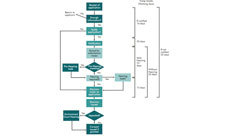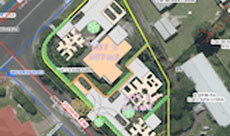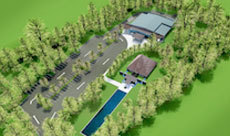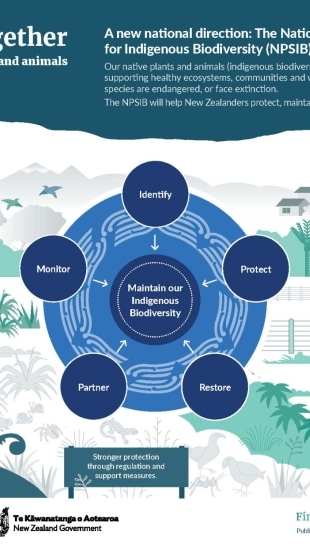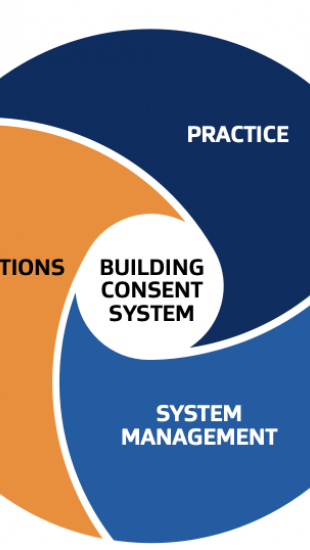New exemptions - Building Act 2004

Summary of new exemptions - Building Act 2004
From 31 August 2020, additional building consent exemptions have been added to the Building Act. Building consents are no longer be needed for a number of new or expanded types of low-risk building work, like sleep-outs, sheds, carports, outdoor fireplaces and ground-mounted solar panels.
The new exemptions will save building owners time and money, by not having to go to their local council for consent for common building projects. This reduction in building consents will also allow Councils to focus on building work that is higher-risk, helping to boost productivity.
This package of new exemptions adds to the work that can already be done without a building consent, outlined in Schedule 1 of the Building Act. Some of the new exempt building work can be done without the help of a professional, while others require the involvement of a Chartered Professional Engineer or Licensed Building Practitioner.
Building work that does not require a building consent must still comply with the Building Code and other legislative requirements, such as those under the Resource Management Act 1991, the Electricity Act 1992 and the Health and Safety at Work Act 2015.
The new exemptions will come into force on 31 August 2020.
Before carrying out exempt work, it's important you follow the MBIE guidance correctly. If you are unsure what legislation may apply, and what the requirements are, it's best to consult a professional.
Single-storey detached buildings:
Single-storey detached buildings include sleepouts, sheds, greenhouses and other similar structures can be built without a building consent. Kitchen and bathroom facilities are not included in the exemption. Any plumbing work to a new or current building still requires a building consent, and any electrical work will still have to be carried out by a registered electrician.
Options include:
- Kitset or prefab buildings with a maximum floor area of 30 square metres where a manufacturer or supplier has had the design carried out or reviewed by a Chartered Professional Engineer.
- Buildings with a maximum floor area of 30 square metres where a Licensed Building Practitioner is to carry out or supervise design and construction
- Buildings with a maximum floor area of 30 square metres can be built by a non-professional, where only lightweight materials with structural components built in accordance to Building Code compliance B1/AS1 are used.
Carports up to 40 square metres:
The new exemptions mean you can build a carport up to 40 square metres in size without a building consent if:
- the design has been carried out or reviewed by a Chartered Professional Engineer, or
- a Licensed Building Practitioner has carried out or supervised design and construction.
Ground-floor awnings up to 30 square metres:
The new exemptions mean you can build an awning of up to 30 square metres on a ground floor without a building consent if:
- the design has been carried out or reviewed by a Chartered Professional Engineer, or
- a Licensed Building Practitioner has carried out or supervised design and construction.
Ground-floor verandas and porches up to 30 square metres:
The new exemptions will mean you can build a veranda or porch of up to 30 square metres on a ground floor without a building consent if:
- the design has been carried out or reviewed by a Chartered Professional Engineer, or
- a Licensed Building Practitioner has carried out or supervised design and construction.
Permanent outdoor fireplaces or ovens:
The new exemption means you can build a permanent outdoor fireplace or oven built up to a maximum height of 2.5 metres, and with a maximum cooking surface of 1 square metre without a building consent. The fireplace or oven must also be at least one metre away from any legal boundary or building, and there may be local government restrictions on lighting open fires in your area.
Flexible water storage bladders:
The new exemption means you can place flexible water storage bladders supported on the ground, for irrigation or firefighting purposes up to 200,000 litres in storage capacity without a building consent.
Ground-mounted solar panel arrays:
The new exemptions mean ground-mounted solar panel arrays can be built without a building consent if:
- The ground-mounted solar panel arrays are up to 20 square metres and in an urban zone. These can be built without the help of a professional.
- The ground-mounted solar panel arrays are between 20 and 40 square metres, in an urban zone and the design has been carried out or reviewed by a Chartered Professional Engineer
- There is no restriction on size for solar panel arrays in rural zones.
Small pipe supporting structures:
Small pipe supporting structures if they only carry water and are on private land can be built without a building consent.
Short-span (small) bridges:
Short-span bridges if they do not span a road or rail area can be built without a building consent. The total span (length) can be a maximum of 6 metres. The design will need to be carried out or reviewed by a Chartered Professional Engineer.
Single-storey pole sheds and hay barns in rural zones:
Single-storey pole sheds or hay barns in a rural zone with a maximum floor area of 110 square metres can be built without a building consent if:
- the design has been carried out or reviewed by a Chartered Professional Engineer, or
- a Licensed Building Practitioner has carried out or supervised design and construction.
Starting a project that doesn't need consent?
If you want to start a building project that doesn't require a building consent, you should hire the right professional required or you can do it yourself if a professional is not required, provided you follow the MBIE guidance.
All exempt building work must meet the Building Code as well as other relevant legislation.
It is the building owner's responsibility to check whether a building consent is required. If the work that you are planning to carry out falls outside of the specified requirements, you will need to get a building consent. If you’re not sure if you need consent - ask for advice from somebody with appropriate building knowledge and expertise.
See MBIE's guidance on building work that does not require a building consent.
MBIE have recently released learning modules to help those who are new to the building code and carrying out work in the building and construction sector.
See MBIE's guidance on building work that does not require a building consent:
- General alterations, maintenance and removal
1.1. General repair, maintenance, and replacement
of building parts
1.2. Interior alterations to existing
non-residential building
1.3. Penetrations through building components
1.4. Removal of building element
1.5. Removal of structures
- Detached, standalone buildings
Notes for single-storey detached buildings: 2.1-2.5 3
2.1. Single-storey detached buildings less than
10 square metres
2.2. Single-storey detached buildings exceeding 10,
but not exceeding 30, square metres in floor area
and constructed of lightweight material
2.3. Single-storey detached buildings not exceeding
30 square metres in floor area with prefabricated
or kitset components
2.4. Single-storey detached buildings not exceeding
30 square metres in floor area
2.5. Unoccupied detached buildings for housing
fixed plants or machinery
Notes for single-storey pole sheds and hay barns
in rural zones: 2.6-2.7
2.6. Single-storey pole sheds and hay barns
2.7. Single-storey pole sheds and hay barns in rural zones
2.8. Repair or replacement of outbuilding
2.9. Demolition of detached building
- Windows, doors and walls
3.1. Windows and exterior doorways in existing
dwellings and outbuildings
3.2. Alteration to entrance or internal doorway to
facilitate access for persons with disabilities
3.3. Internal walls and doorways in existing building
3.4. Internal linings and finishes in existing dwelling
- Plumbing and drainage
4.1. Repair, maintenance, and replacement of
sanitary plumbing and drainage
4.2. Drainage access points
4.3. Repair and maintenance of existing water heater
4.4. Replacement of open-vented water storage heater
connected to supplementary heat exchanger
4.5. Replacement or repositioning of water heater
connected to controlled heat source
4.6. Minor alteration to drains
4.7. Alteration to existing sanitary plumbing
(excluding water heaters)
- Insulation and moisture barriers
5.1. Thermal insulation
5.2. Ground moisture barrier
- Porches, verandas and pergolas
Notes for porches and verandas
6.1. Porches and verandas up to 20 square metres
6.2. Porches and verandas exceeding 20 square metres
in floor area but not exceeding 30 square metres
6.3. Porches and verandas exceeding 20 square metres in
floor area but not exceeding 30 square metres
6.4. Closing in existing veranda or patio
6.5. Pergolas
- Platforms, decks and bridges
7.1. Decks, platforms, bridges, boardwalks etc
7.2. Short-span bridges on private land
- Shelters, shades and carports
Notes for carports: 8.1-8.3
8.1. Carports not exceeding 20 square metres in floor area
8.2. Carports exceeding 20 square metres in floor area,
but not exceeding 40 square metres
8.3. Carports exceeding 20, but not exceeding 40,
square metres in floor area
8.4. Shade sails
8.5. Tents, marquees, and similar lightweight structures
Notes for Ground floor awnings: 8.6-8.8
8.6. Ground floor awnings up to 20 square metres
8.7. Awnings exceeding 20 square metres in size,
but not exceeding 30 square metres
8.8. Awnings exceeding 20 square metres in size,
but not exceeding 30 square metres
- Fencing and restrictions
9.1. Fences and hoardings
9.2. Means of restricting access to small heated pools
9.3. Height-restriction gantries
- Playground equipment
10.1. Private household playground equipment
10.2. Certain public playground equipment
- Pools, tanks and dams
11.1. Tanks and pools
11.2. Dams (excluding large dams)
11.3. Flexible water storage bladders
- Signage
12.1. Signs up to 6 square metres, with 3 metre height limit
12.2. Signs with no restrictions on size
- Support structures
13.1. Structures supporting water pipes
Notes for Retaining walls: 13.2-13.3
13.2. Retaining walls up to 1.5 metres depth of
ground without surcharge
13.3. Retaining walls up to 3 metres depth of ground
- Other structure
Notes for Ground-mounted solar panel arrays: 14.1-14.2
14.1. Ground-mounted solar panel arrays
14.2 Ground-mounted solar panel exceeding 20, but not
exceeding 40, squares metres in size (outside rural zones)
14.3. Permanent outdoor fireplaces and ovens
14.4. Temporary storage stacks
14.5. Plinths
- Network utilities
15.1. Certain structures owned or controlled by
network utility operators or other similar organisations

